Team 17’s Sweet Transit invites players to build a thriving colony in a world whereby trains are the only form of transport. The game is currently in early access, on Steam, with players invited to play as the developers refine the game.
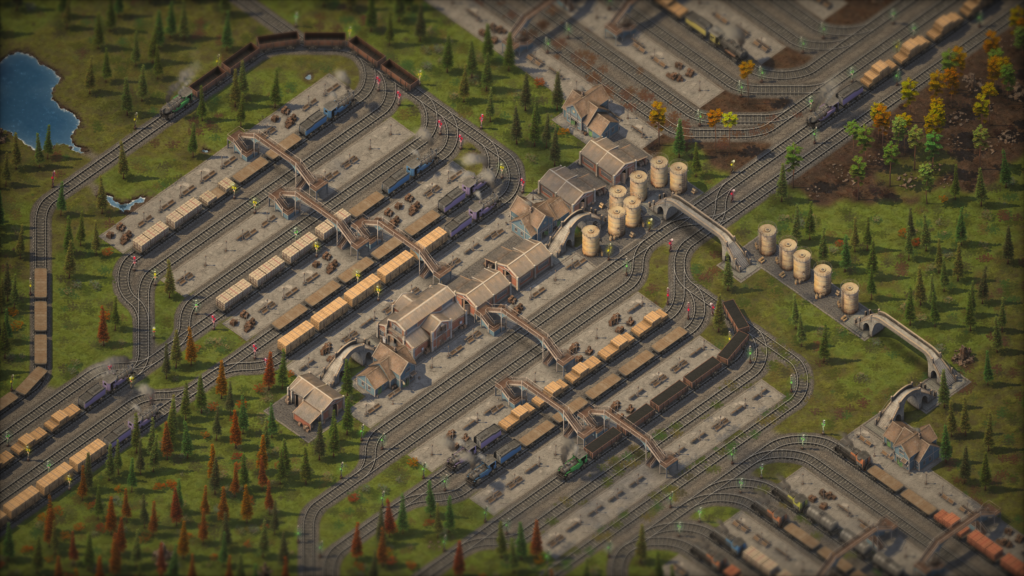
Ever since Sid Meier’s Railroads I’ve had a thing for transport games. Pretty sad, really, as I’ve worked as a transport engineer for many years. Sweet Transit joins the likes of contemporary transit/city builders such as Transport Fever 2, Railway Empire, and Cities Skylines. At its heart, Sweet Transit, like its peers, is a network management game. Players have to connect resources (workers, fuel, materials, and food) via a system of railway lines, to which routes and trains are assigned. It’s not a particularly original concept and follows similar game mechanics to other games in the genre. The first question I had in mind was why would I play this over, say, the nigh-on identical Railway Empire?
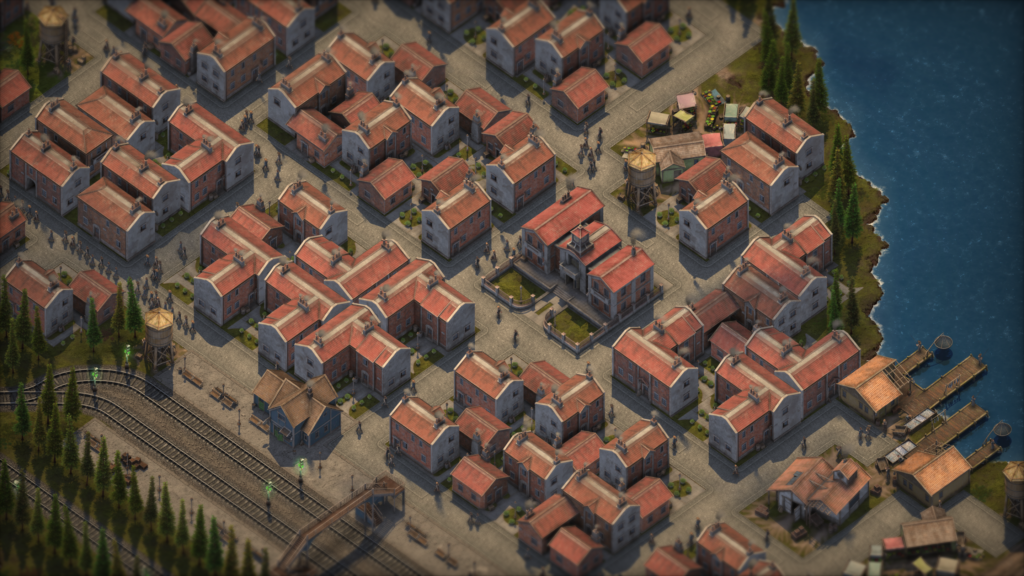
The game has a tutorial that I recommend players take advantage of before embarking on building their colony. The tutorial covers the major elements of the game just about enough to get you going but could be a lot more comprehensive. I don’t know if it was my familiarity with similar games that worked against my understanding of some of the nuances of Sweet Transit’s mechanics, or not, but I felt the tutorials to be a little vague at times. With the tutorials out of the way, you can either start a game using the included Paris map of the tutorials or create a new map using a random seed and some adjustable attributes that help shape the terrain. The Paris map has some infrastructure in place to get you started, whereas a new map is a blank canvas ready for you to build your colony. The first thing that you need to build is a warehouse. This is where all your goods are stored. For some reason, once placed the surrounding area is marked out of bounds. You can’t build your village or access any of the resources in the area- you can only build a station and railway to connect the warehouse to your network. Similarly, the next item that needs to be constructed, the village hall, also restricts recourse gathering in the area. The only reason I can think of why the game would do this is to force players to build expansive railway lines to connect the various locations. It does feel a bit clumsy, especially as small networks are what you really need to be building to get grips with the game. The village hall allows players to start building laborers’ houses, which need to be connected by roads and have a water supply via a nearby constructed water tower. Villages need to be located near water for a fishing port to be constructed, providing the community with their initial source of food. Villagers will also require a nearby market. As the workforce increases, more infrastructure is unlocked the construction of which, in turn, unlocks more buildings/technologies.
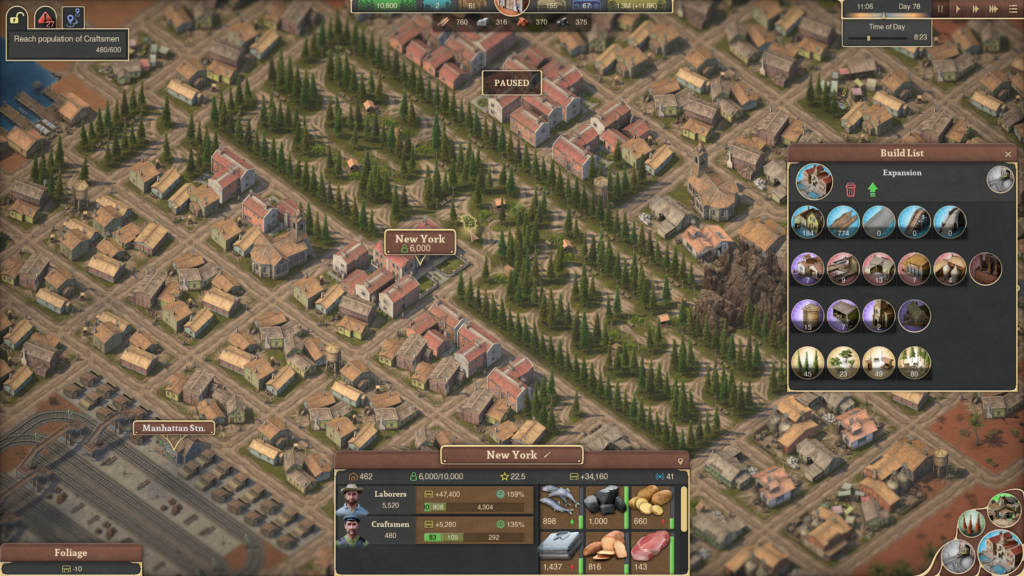
Initially, players can only mine coal, but this quickly expands to include wood and rock, the staples on which your colony depends. For coal and rock, mines and quarries need to be set up near the deposits. Timber can be milled anywhere, as you need to also plant a tree nursery with which to harvest. As well as the associated mine, quarry or sawmill, storage facilities must also be constructed to house the materials for pickup. All resource gathering follows a similar mechanic. The main part of the game is, of course, all about connecting all this together via railway lines. This involves building stations, connecting them with railway tracks, building trains, and assigning trains to routes. This is where things get complicated. Stations need to be carefully positioned of people won’t use them and resources won’t be connected. Similarly, tracks must be contiguous and laid all facing the right way. The game can be very unhelpful if you find that your network just doesn’t work. Care must also be taken when assigning routes. To build trains you need a train depot. This is straight out of Railway Empire. I found it odd that I could build a train with passengers and goods carriages but it would only take passengers. Whilst likely something I’d overlooked; the game isn’t always intuitive. As things get more complex, railways need to be signalised. This is where the game can get quite frustrating and I found myself fighting against the mechanics of the game and not the challenge of the game, itself. Whilst the tutorial does go into detail about signal operation, the game does not clearly graphically illustrate elements that can cause crippling failure to your rail network. One tiny signal, incorrectly placed, can bring everything to a halt.
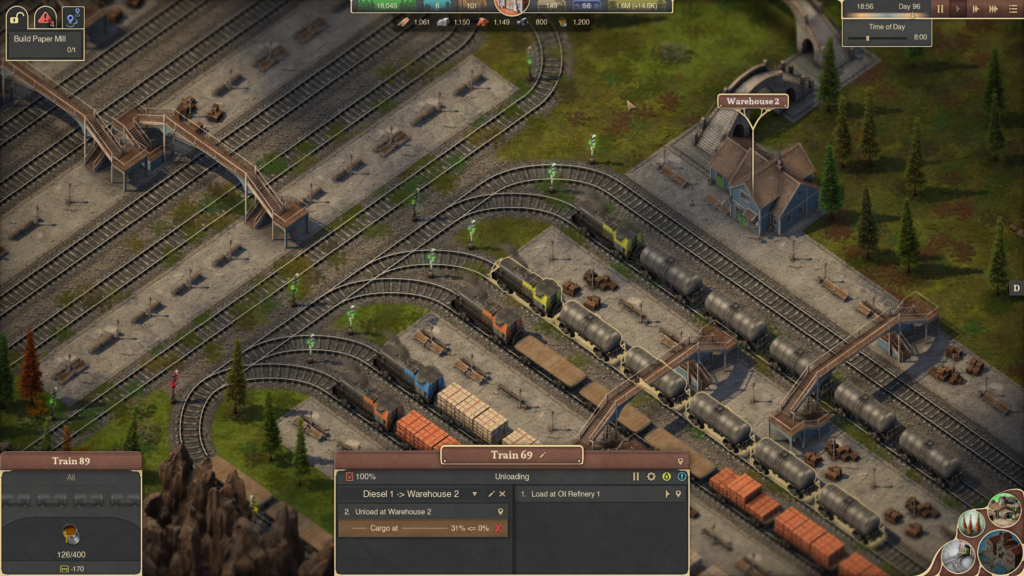
Troubleshooting is a nightmare, having to hover over tiny components to find the issue while working with a complex network isn’t fun. A few times routes just failed on me and I had to delete them and start again. I’m sure there was a logical reason for the failure, but the game wasn’t making it easy for me to sort it out. Across all of the transportation games, the network management is complex and not for everyone, but other games seem a lot more refined and helpful when things do go wrong. The clarity of the visuals and the way information is displayed is a general complaint that I have with the game. The world can be zoomed right out for a more schematic (but rather ugly) overview, allowing you to see all your trains, the lines, and the location of resources. But when you actually want to find a resource and construct the relevant piece of infrastructure, you can’t zoom out, and instead, need to pan around. The map navigation is a bit painful compared to its peers.
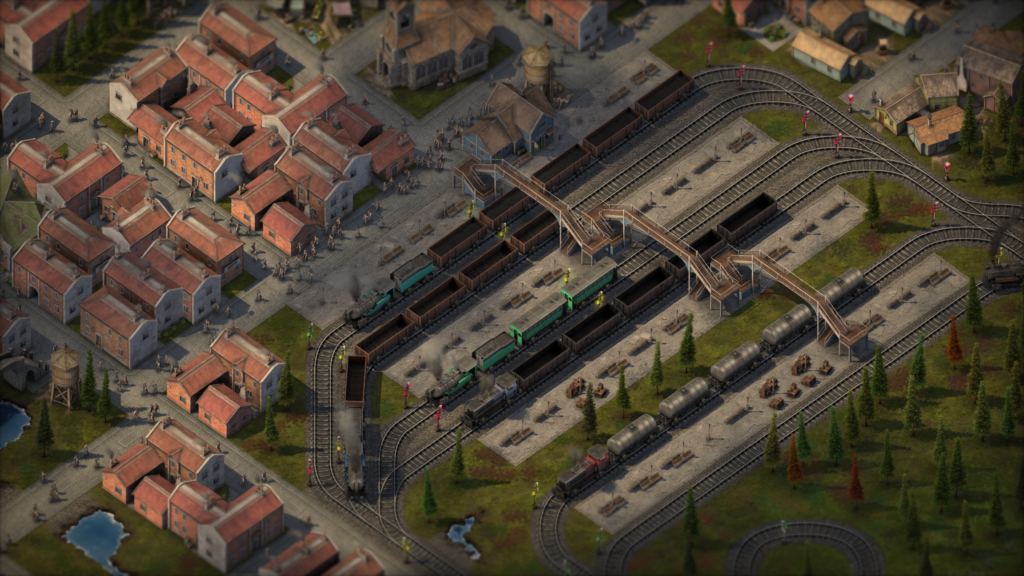
Sweet Transit is, on the whole, a nice-looking game. The retro, illustrative style would probably more suit a mobile game or a Switch game than on PC, but it does the job. With a network up and running, it’s a lot of fun and satisfying to just watch your trains going about their business. The meat is in the railway planning, which can be very satisfying- like having a little train set to tinker with. The city-building aspect feels a bit tacked on, though clearly inspired by the Anno games.
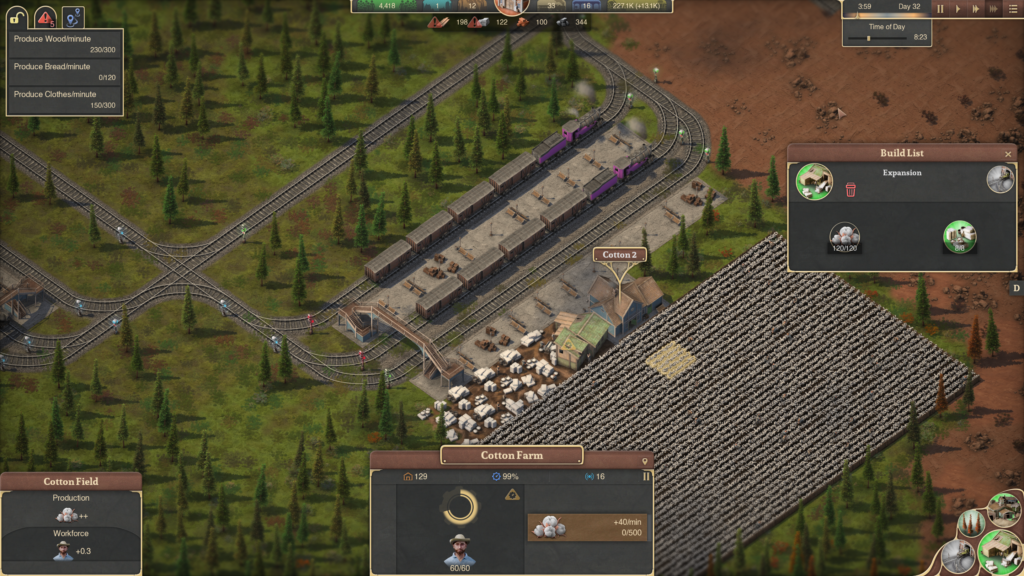
I’m not sure if the issues I came across were down to my lack of understanding or bugs. In any case, I think the game could do with some refinement. It is a Steam early access game, so hopefully, some of the issues will be sorted out and perhaps the tutorials expanded accordingly. The biggest problem that Sweet Transit faces is that it doesn’t offer anything more than other similar games. Transport Fever 2, for instance, has all kinds of transport modes, not just trains, whilst Railway Tycoon is virtually identical but far more refined. It’s difficult to recommend a game so similar to others that do it so much better. Despite the game’s shortcomings, Sweet Transit is still a lot of fun and very moorish. It is a bit rough around the edges, but this is to be expected of an early access game. Once you overcome/accept its quirks, the game does a pretty good job of delivering an engrossing transport game and you can expect to enjoy spending hours and hours refining your railway systems.
Purchase Sweet Transit on Steam!
Bringing you the latest news and reviews for games on Steam!

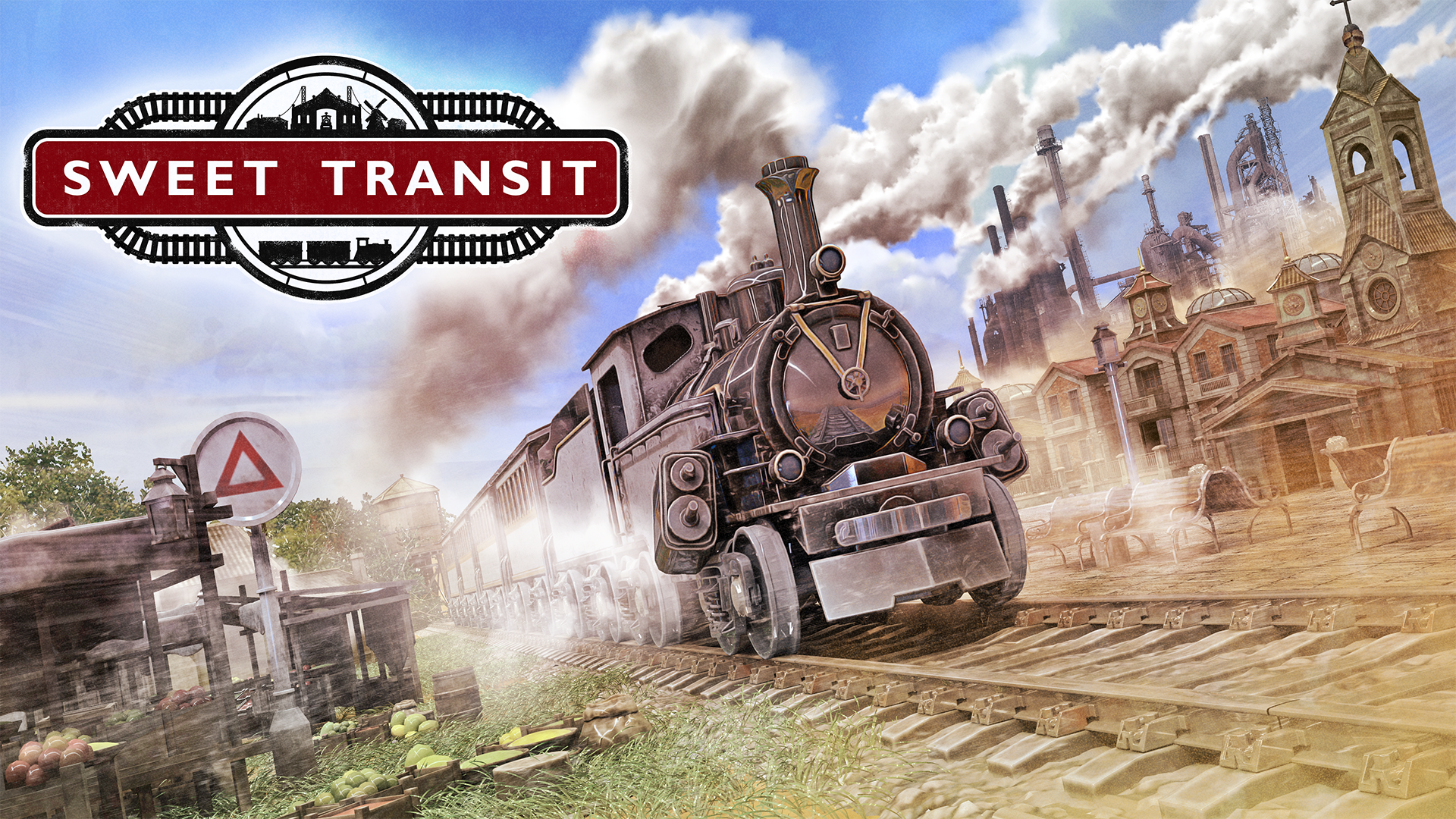
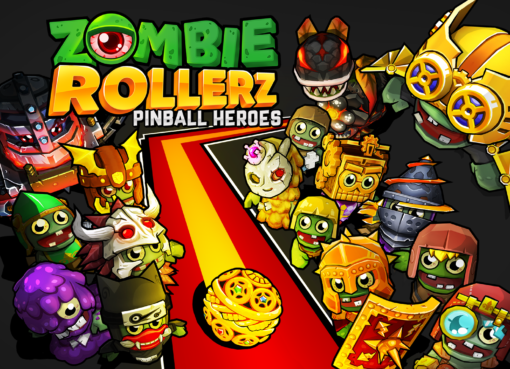


Comment here